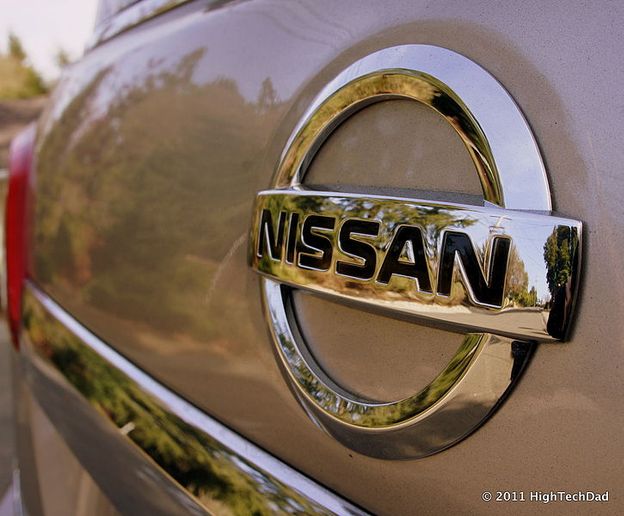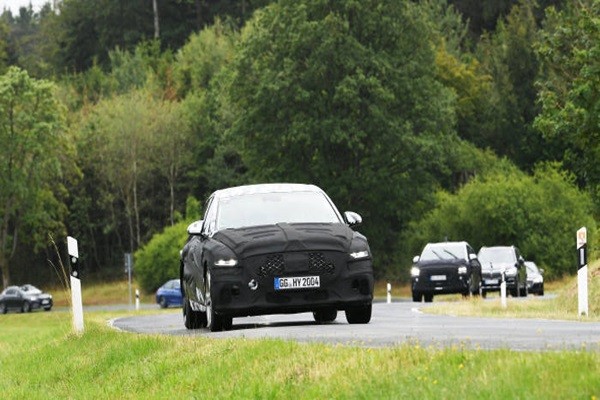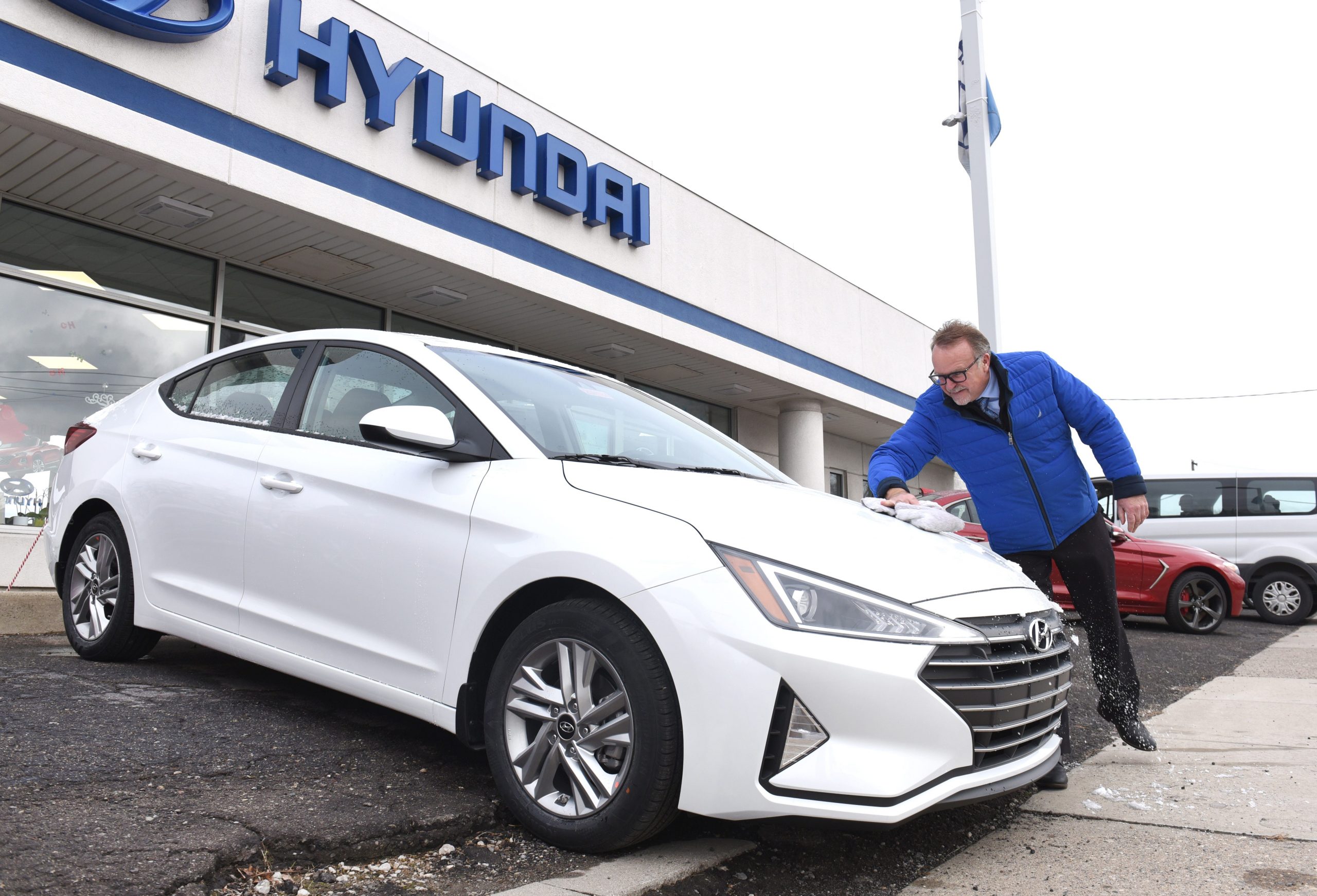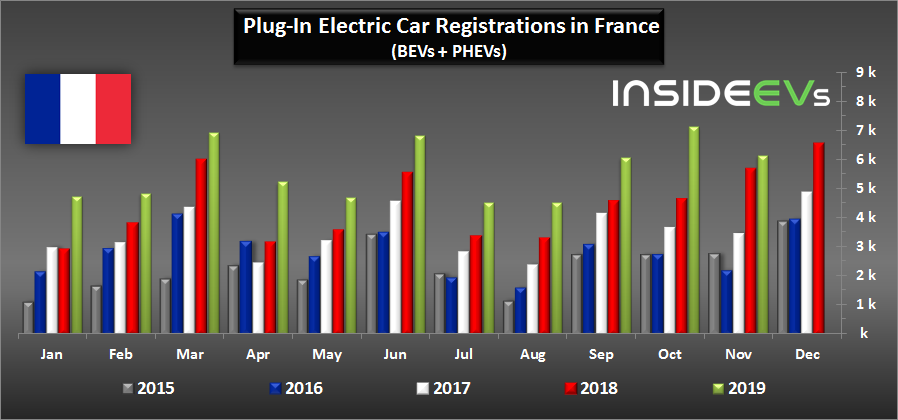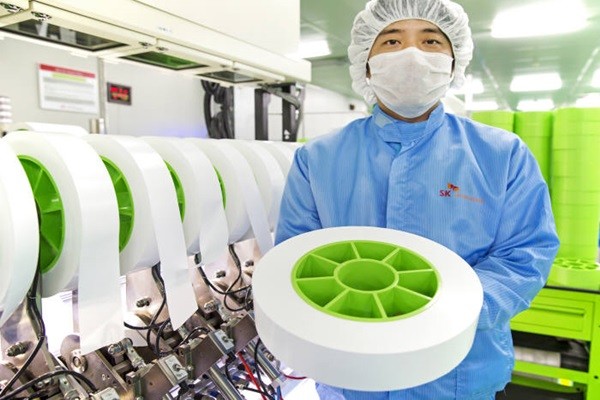Posted on 12 Dec 2019 at 12:49 What Makoto Uchida wants for his teams within Nissan, he also wants it for the Alliance with Renault and Mitsubishi. For Nissan’s new CEO, who took office on December 1, 2019, “restoring” trust with both partners is a top priority. For this, a key word, “transparency”. “To respect… Continue reading Renault-Nissan Alliance: Makoto Uchida wants to “restore” confidence
Tag: Renault
28,000 Tweets Helped Elon Musk Develop Tesla Cybertruck
Invest
Electric Cars
Electric Car Benefits
Electric Car Sales
Solar Energy Rocks
RSS
Advertise
Privacy Policy
Autonomous Vehicles
Published on December 9th, 2019 |
by Johnna Crider
28,000 Tweets Helped Elon Musk Develop Tesla Cybertruck
Twitter
LinkedIn
Facebook
December 9th, 2019 by Johnna Crider
In a heartfelt article written by Kristen Netten on Medium, she explains why the Cybertruck is the truck for a hero. When one thinks of a hero, we may think of police or firefighters or even our own personal heroes who have impacted our lives. Elon Musk is one of mine and is a hero to millions of people around the world for all the good he has done through his companies.
The article explains how 26,000 comments from the Twitter community about the Cybertruck helped Tesla create a truck that is fit for a hero.
It all started in June of 2018 when Elon Musk asked his followers what they would like to see in a truck. Kristen’s article also shows evidence that Elon Musk engaged in a bit of market research with this tweet.
You ask your customers what they want, and they tell you. This is exactly what happened in the case of the Cybertruck. Mike Maat replied to Elon saying that they wanted a flatbed with no wheel well humps. R-Dub said that a built-in bed cover that could roll out when needed would be great, and also that it would be “next level to have solar panels built into the bed cover.” Jeff Mueller brought up air suspension and suggested a heavy-duty air compressor to run air tools. Elon loved that idea and even replied saying that it was a great idea and that it made sense to add a utility port. He also said the truck would have a Tesla pneumatics system (which is why that makes sense).
NocturnusAnime created a list of features that Elon Musk implemented into the Cybertruck (look at the photo above). That list is:
300–500 mile range,
bed or camper shell lined with solar cells to help with regen,
front trunk alongside long bed option,
comfy/spacious crew cab for those in the back,
toolbox compartment in the bed that doubles as an ice chest, like the Nissan Frontier Titan has.
In her Medium article, Kristen sums up other things like off-road capabilities, on-road performance, the price, and how Elon saw the request to make it reasonably priced like the Model 3. Kristen also shows that the 2018 tweet asking for truck comments and recommendations wasn’t the first time Elon mentioned the truck. He also brought it up in 2017: “I promise that we will make a pickup truck right after the Model Y” — a promise that he, despite what critics have said about Elon keeping his promises, has kept.
Not only does Elon Musk keep his promises, but he listens to his customers. This shows that he values his customers. As an artist who sells jewelry made with minerals, I often get people who have entire stories to tell about a stone, or as to why a mineral means so much to them. My job in that aspect isn’t to make them jewelry, but to listen to their story. Stories are what keep us connected. Stories are part of what make us human. They help us learn, communicate, and be better people. People who listen to their customers show that they care. This is why so many people (including myself) admire Elon Musk.
Who is the hero Kristen was talking about in her article? It was definitely Elon Musk, a guy who happens to be a billionaire but isn’t shy about using his funds to help humanity. Whether it’s dropping everything because he was asked to help save lives or helping an American city upgrade their water system while our government sits back takes its time.
Even though Elon Musk was the hero Kristen had in mind when writing her article, Elon Musk isn’t the only hero. Many members of the Tesla community are also heroes. Whether it’s a group of people raising funds to send a care package to someone in need, donating toys to the Salvation Army, or pledging to plant millions of seed and trees, this community is a network of people to admire. It’s no wonder why we are all “obsessed with Tesla,” as Viv explains well in the tweet above.
Follow CleanTechnica on Google News.
It will make you happy & help you live in peace for the rest of your life.
About the Author
Johnna Crider Johnna Crider is a Baton Rouge artist, gem and mineral collector, and Tesla shareholder who believes in Elon Musk and Tesla. Elon Musk advised her in 2018 to “Believe in Good.”
Tesla is one of many good things to believe in. You can find Johnna on Twitter
Back to Top ↑
Advertisement
Advertise with CleanTechnica to get your company in front of millions of monthly readers.
Top News On CleanTechnica
CleanTechnica Clothing & Cups
Join CleanTechnica Today!
Listen to CleanTech TalkAdvertisement
Advertisement
Follow CleanTechnica Follow @cleantechnica
Our Electric Car Driver Report
Read & share our new report on “electric car drivers, what they desire, and what they demand.”
The EV Safety Advantage
Read & share our free report on EV safety, “The EV Safety Advantage.”
EV Charging Guidelines for Cities
Share our free report on EV charging guidelines for cities, “Electric Vehicle Charging Infrastructure: Guidelines For Cities.”
30 Electric Car Benefits
Our Electric Vehicle Reviews
Tesla News
38 Anti-Cleantech Myths
© 2019 Sustainable Enterprises Media, Inc.
Invest
Electric Cars
Electric Car Benefits
Electric Car Sales
Solar Energy Rocks
RSS
Advertise
Privacy Policy
This site uses cookies: Find out more.Okay, thanks
Turo to Provide Nissan Vehicles for Extended Test Drives
Bookings are scheduled on Turo and can be for a few hours, a day, a weekend, or longer. Photo via MichaelSheehan/Wikimedia. Nissan is launching a new way for consumers to get to know its cars through an extended test-drive experience hosted by Turo, in three test markets: Los Angeles, Northern New Jersey, and Salt Lake… Continue reading Turo to Provide Nissan Vehicles for Extended Test Drives
Many New Cars Integrated with Cutting-Edge Technologies Expected to Be Released Next Year
New cars that are integrated with cutting-edge technologies will be made available next year. Cars that show off their advanced technologies by having their platform, design, and powertrain completely changed are preparing to be released. As a recent trend amongst consumers who prefer mental satisfaction compared to price has been applied to the automotive market,… Continue reading Many New Cars Integrated with Cutting-Edge Technologies Expected to Be Released Next Year
As Ford, Chevy exit sedan market, Asian makers gain share
Phoenix — A year after Ford and Chevrolet abandoned the compact-car segment to prioritize SUVs, buyers are abandoning those makes and shopping for cars made by Hyundai, Toyota and Honda. Some 42% of Ford Focus and Chevy Cruze compact car owners have stayed in the compact car segment with a significant percentage buying competitors’ vehicles, according to an industry… Continue reading As Ford, Chevy exit sedan market, Asian makers gain share
Japan regulators recommend $22 million fine on Nissan
Japanese securities regulators are recommending that automaker Nissan be fined 2.4 billion yen ($22 million) over the under-reporting of compensation of its former chairman, Carlos Ghosn.Nissan Motor Co. said it accepted the penalty and had corrected its securities documents in May, although its final decision will come after it receives official notice.Nissan was charged earlier with under-reporting Ghosn’s compensation.
Nissan to be fined $22m for misstating Carlos Ghosn’s pay
Carmaker does not intend to ‘dispute the alleged facts’ or amount of the penalty Go to Source
PHEVs Are Getting Closer To Matching BEV Sales In France
Renault ZOE once again captured 58% of total passenger BEV registrations, but it seems that PHEVs are gaining traction. Waiting for a volume deliveries of the all-new Renault ZOE, the French market notes small plug-in car sales growth only thanks to plug-in hybrids. In November, some 6,144 new plug-in cars were registered (up 6% year-over-year). Passenger… Continue reading PHEVs Are Getting Closer To Matching BEV Sales In France
Press Releases – Global auto manufacturers call for resolution of WTO impasse
Brussels, 10 December 2019 – The EU, US, Japanese and Korean automobile manufacturers have joined forces to express their concerns about the impending blockage of the decision-making process in the World Trade Organisation’s (WTO) appellate body structure. The global coalition of automobile manufacturers calls on all WTO member countries to swiftly resolve the current impasse… Continue reading Press Releases – Global auto manufacturers call for resolution of WTO impasse
South Korea Still Lacking Competitive Edge in Key Battery Materials
It is shown that South Korea, which is considered as a lithium-ion battery powerhouse, is still far away from catching up to China and Japan when it comes to market shares of four key battery materials such as cathode material, anode material, electrolyte, and separator film.According to the results of an investigation recently announced by… Continue reading South Korea Still Lacking Competitive Edge in Key Battery Materials
